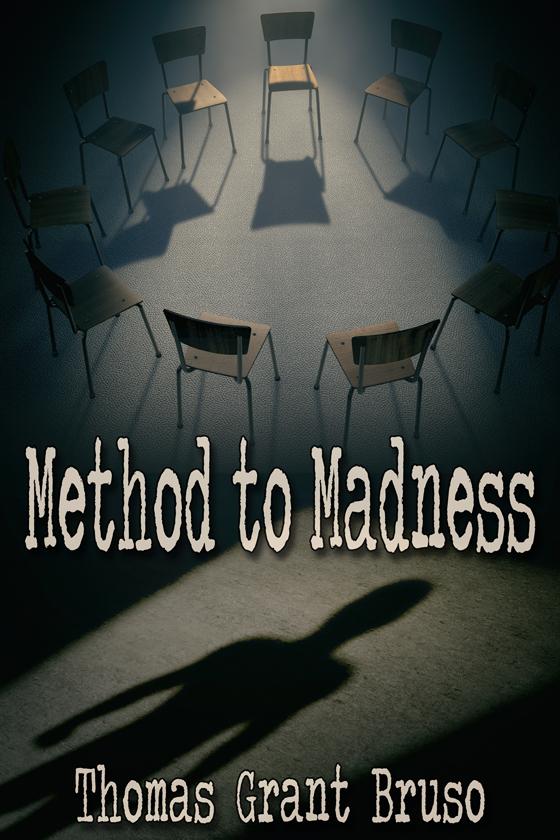This post is part of a virtual book tour organized by Goddess Fish Promotions. Jonathan Weeks will award a randomly drawn winner a $25 Amazon/BN gift card. Click on the tour banner to see the other stops on the tour.
What would you tell a new author?
I’ve been asked this several times before and I always say the same thing: As an author, you have to have thick skin. It’s tough finding a publisher for your work and, even if you do, it doesn’t guarantee that you will sell many copies. It’s best to write for the sheer enjoyment of it. Don’t worry about becoming the next Stephen King or James Patterson. Write because you can. Write for yourself. And if your work ends up being published, DON’T read the reviews!
What scares you the most as an author?
As a non-fiction writer, there are actually two things that scare me. One is the idea that someone will publish a book on the same topic while my own book is in the production phase. I understand that books on identical topics can peacefully co-exist, but it’s discouraging when another author beats you to the punch. Another thing that scares me is live interviews. I have never been comfortable with public speaking in any shape or form. I used to do a radio show with a friend when I was in college. I was okay if I was reading off of a script, but was never completely relaxed when we would improvise.
What is the hardest part about writing?
That’s a tough question because there are so many difficult things about writing. For me, the hardest part has always been accepting the finished product. I am a harsh critic of my own work. And I tend to over-edit. There are days when I absolutely hate the work that I have produced and want to start over from the beginning. But I resist because I know that’s just me being me.
What is your ideal writing space?
I’ve found over time that I can write just about anywhere as long as I have a comfortable place to sit and there are few distractions. One thing I can’t do while writing is listen to music. Music is one of my passionate interests and, if it’s on in the background, it commands my attention. There’s no way I’m going to produce a coherent sentence in competition with song lyrics. I have tried listening to guitar instrumentals and classical music while writing but that distracts me as well. I prefer a quiet place.
There has probably never been a professional baseball player more of a puzzle than Joe DiMaggio. DiMaggio had a talent for keeping his emotions suppressed and his innermost thoughts to himself. Few could say that they really knew him. And even the ones who did found him to be unpredictable. He was a walking contradiction. He was quiet, but not necessarily shy. He could be both gracious and abrupt, approachable or aloof depending on the situation. Although he came across as humble, he had a tremendous sense of entitlement. He was complex, secretive, inscrutable. There were many layers to the man who came to be affectionately known as the “Yankee Clipper.” DiMaggio always felt that his actions on the field should do the talking for him. And for the most part, they did. To many, DiMaggio personified elegance, style, and grace. An impeccable dresser, he was married to two glamorous actresses. On the field, he glided almost effortlessly, never having to dive for a ball and rarely (if ever) making a mistake on the basepaths. He became the living embodiment of the American dream and a symbol of the country’s so-called “greatest generation.” But as time marched on, DiMaggio grew increasingly distrustful of the people around him. It was understandable—inevitable even. The third book in Jonathan Week’s Yankees trilogy contains an abundance of anecdotes, statistics, and other little known facts about the Yankee Clipper.
Enjoy an Except
CASE OF THE PURLOINED BAT
DiMaggio suffered a major scare during his 56-game hitting streak. On June 29, 1941, the Yankees traveled to Washington for a double-header against the Nationals (often referred to as the Senators). Joe had hit in 40 straight games and was poised to break the modern record set by George Sisler in 1922. His double in the opener tied Sisler’s mark. In the first inning of the evening game, Tommy Henrich was on his way to the plate when he heard DiMaggio shouting across the diamond. Joe couldn’t locate his favorite bat and wondered if Henrich had done something with it.
Joe was very attached to that particular piece of lumber, naming it “Betsy Ann.” He had been using it throughout the streak and worried that he might fall into a slump without it. A frantic search turned up nothing. The bat was gone. Forced to hit without “Betsy Ann,” DiMaggio flied out. Two innings later, he switched bats and lined out to short. In the seventh inning, Henrich gave Joe his own bat to use. Averting disaster, The Yankee Clipper lined a clean single to left field, claiming Sisler’s record for himself. Still, the loss of his favorite bat vexed him.
“Of course the guy had to pick out the best one,” Joe told reporters after the game. “I had three of my bats on the ground in front of the dugout but he got the one I wouldn’t take money for…the bat was just right for me. I liked the feel of it. I hate to lose it.”
About a week later, “Betsy Ann” was delivered by courier to the Yankee clubhouse in a plain brown package. Behind the scenes, one of Joe’s assistants—a wise-guy named Jimmy “Peanuts” Ceres—had spent five days looking for the bat. As it turned out, the thief had ties to the Newark underworld (which was Jimmy’s domain) and also happened to be a braggart. When the thief’s identity was revealed, Jimmy paid the guy a visit with one of his associates. Specific details of how they persuaded the man to return Joe’s prized bat have never been disclosed.
About the Author: Jonathan Weeks has written several sports biographies and two novels, one of which was a posthumous collaboration with his father. He grew up in the Capital District region of New York State and currently works in the mental health field.
Buy the book at Amazon.
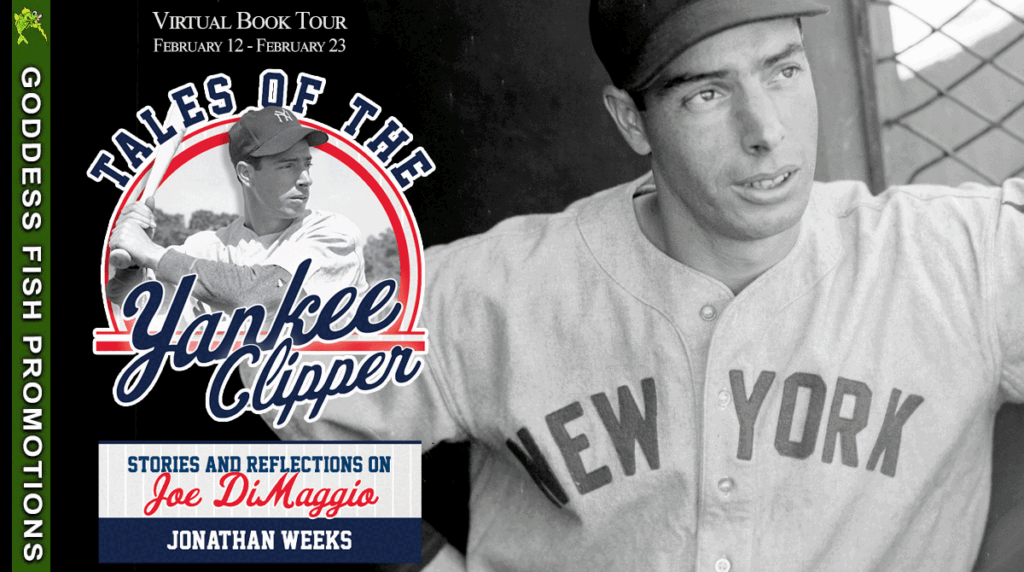
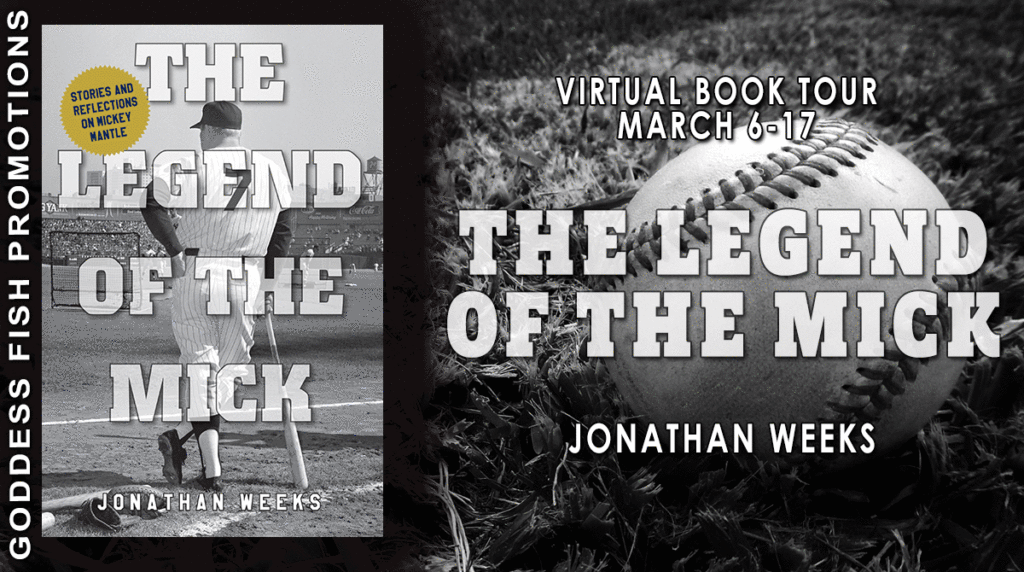
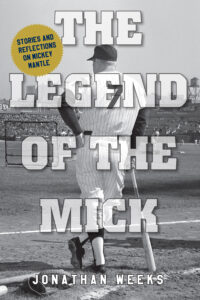 In the 1950s, America entered the television age. And Mickey Mantle, a country boy from Commerce, Oklahoma, was made for the moment. Signed by the New York Yankees as a teenager, he made his major league debut in 1951 as a right fielder alongside Joe DiMaggio. When DiMaggio retired at the end of the season, Mantle inherited not only Joltin’ Joe’s position in centerfield but also his stature as the face of the franchise. His boyish good looks, breathtaking power from both sides of the plate, and blazing speed on the basepaths made him an instant superstar. He won league MVP three times, came in second three times, was a 16-time All-Star, a Triple Crown winner in 1956, and a seven-time World Series champion.
In the 1950s, America entered the television age. And Mickey Mantle, a country boy from Commerce, Oklahoma, was made for the moment. Signed by the New York Yankees as a teenager, he made his major league debut in 1951 as a right fielder alongside Joe DiMaggio. When DiMaggio retired at the end of the season, Mantle inherited not only Joltin’ Joe’s position in centerfield but also his stature as the face of the franchise. His boyish good looks, breathtaking power from both sides of the plate, and blazing speed on the basepaths made him an instant superstar. He won league MVP three times, came in second three times, was a 16-time All-Star, a Triple Crown winner in 1956, and a seven-time World Series champion.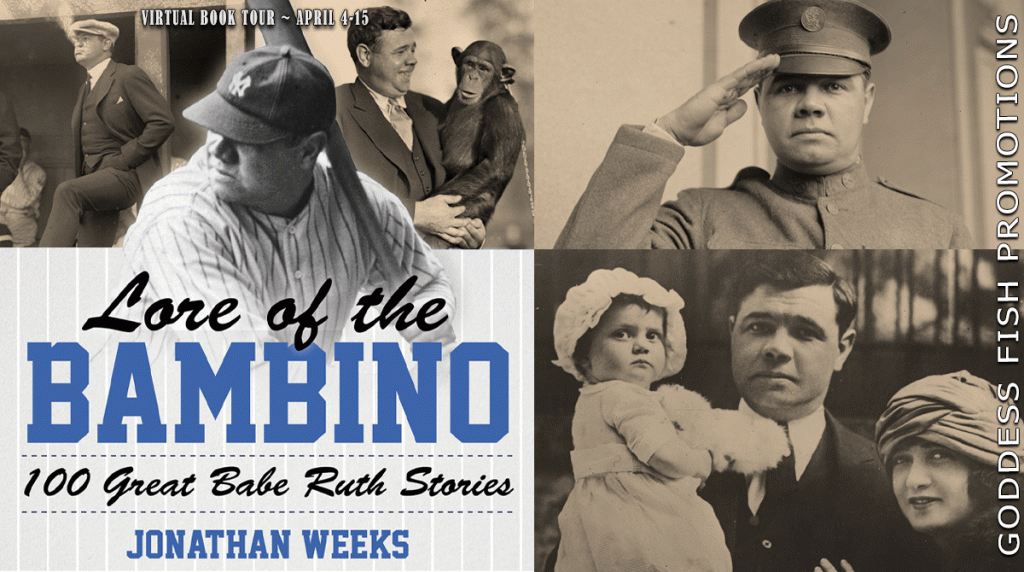
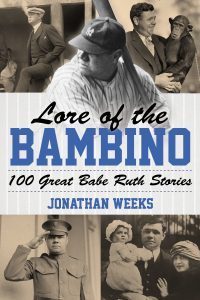 More than seventy years after his death, Babe Ruth continues to fascinate generations of fans. His exciting adventures on and off the field have become essential reading for students of baseball and pop culture. While most Ruth biographies are filled with mundane facts, Lore of the Bambino is the equivalent of a greatest hits compilation. Ruth’s extraordinary (and at times incredulous) tales carry readers on an enthralling journey through the life of the most celebrated sports figure of the twentieth century. All of the most popular anecdotes (such as the Babe’s alleged “called shot” in the 1932 World Series) are thoroughly covered along with many lesser known narratives.
More than seventy years after his death, Babe Ruth continues to fascinate generations of fans. His exciting adventures on and off the field have become essential reading for students of baseball and pop culture. While most Ruth biographies are filled with mundane facts, Lore of the Bambino is the equivalent of a greatest hits compilation. Ruth’s extraordinary (and at times incredulous) tales carry readers on an enthralling journey through the life of the most celebrated sports figure of the twentieth century. All of the most popular anecdotes (such as the Babe’s alleged “called shot” in the 1932 World Series) are thoroughly covered along with many lesser known narratives. A lifelong sports fan, Weeks has published several non-fiction books on the topic of baseball. Additionally, he has two novels to his credit–one of them a posthumous collaboration with his father. His latest project: Best of the Bruins: Boston’s All Time Great Players and Coaches, is due out in 2021.
A lifelong sports fan, Weeks has published several non-fiction books on the topic of baseball. Additionally, he has two novels to his credit–one of them a posthumous collaboration with his father. His latest project: Best of the Bruins: Boston’s All Time Great Players and Coaches, is due out in 2021.
 Among the “original six” NHL clubs to survive the Great Depression, the Boston Bruins have a vibrant history. Entering the 2020-’21 campaign, the team ranked fourth all-time with six Stanley Cup championships. Some of the most gifted players in NHL history have skated for the Bruins over the years. Best of the Bruins: Boston’s All-Time Great Players and Coaches tells the individual stories of the players and coaches who have helped make the Bruins perennial contenders for close to a century. Profiles of current players are included in this sweeping survey.
Among the “original six” NHL clubs to survive the Great Depression, the Boston Bruins have a vibrant history. Entering the 2020-’21 campaign, the team ranked fourth all-time with six Stanley Cup championships. Some of the most gifted players in NHL history have skated for the Bruins over the years. Best of the Bruins: Boston’s All-Time Great Players and Coaches tells the individual stories of the players and coaches who have helped make the Bruins perennial contenders for close to a century. Profiles of current players are included in this sweeping survey. A lifelong sports fan, Weeks has published several non-fiction books on the topic of baseball. Additionally, he has two novels to his credit–one of them a posthumous collaboration with his father. His latest project: Best of the Bruins: Boston’s All Time Great Players and Coaches, is due out in 2021.
A lifelong sports fan, Weeks has published several non-fiction books on the topic of baseball. Additionally, he has two novels to his credit–one of them a posthumous collaboration with his father. His latest project: Best of the Bruins: Boston’s All Time Great Players and Coaches, is due out in 2021.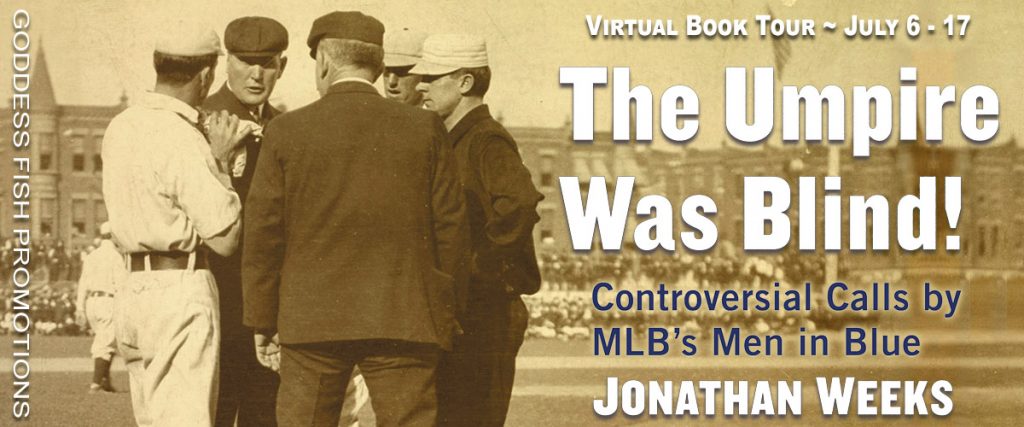
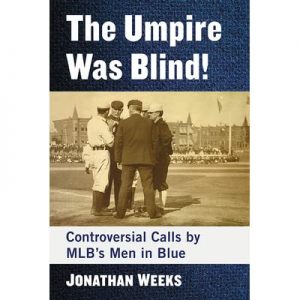 In the words of former American League umpire Nestor Chylak, umpires are expected to “be perfect on the first day of the season and then get better every day.” Forced to deal with sullen managers and explosive players, they often take the blame for the failures of both. But let’s face it—umpires are only human.
In the words of former American League umpire Nestor Chylak, umpires are expected to “be perfect on the first day of the season and then get better every day.” Forced to deal with sullen managers and explosive players, they often take the blame for the failures of both. But let’s face it—umpires are only human. Weeks spent most of his life in the Capital District region of New York State. He earned a degree in psychology from SUNY Albany. In 2004, he migrated to Malone, NY. He continues to gripe about the frigid winter temperatures to the present day. He has published several books on the topic of baseball. He would have loved to play professionally, but lacked the talent. He still can’t hit a curve ball or lay off the high heat. In the winter months, he moonlights as a hockey fan.
Weeks spent most of his life in the Capital District region of New York State. He earned a degree in psychology from SUNY Albany. In 2004, he migrated to Malone, NY. He continues to gripe about the frigid winter temperatures to the present day. He has published several books on the topic of baseball. He would have loved to play professionally, but lacked the talent. He still can’t hit a curve ball or lay off the high heat. In the winter months, he moonlights as a hockey fan.




















